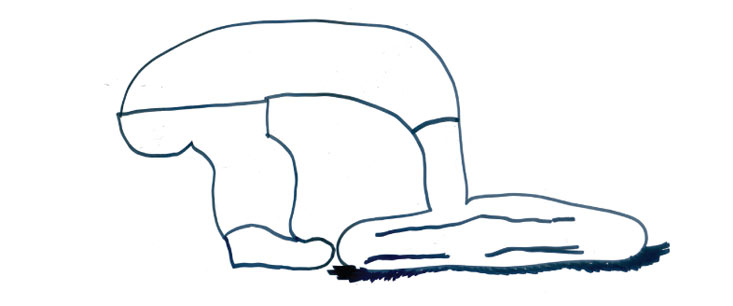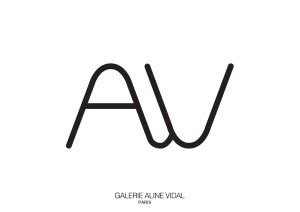 HI, HOW ARE YOU / DANIEL JOHNSTON + MIKOŁAJ TKACZ
HI, HOW ARE YOU / DANIEL JOHNSTON + MIKOŁAJ TKACZ
otwarcie / opening 25.01.2018 / 20:00
/ Wystawa potrwa do 14 lutego.
/ The exhibition will last until 14th February
PROJECT CARRIED OUT WITH THE FINANCIAL SUPPORT OF THE CITY OF POZNAN // PROJECT CARRIED OUT WITH THE FINANCIAL SUPPORT OF THE GREATER POLAND SELF-GOVERNMENT VOIVODESHIP

The exhibition Hi, How Are You does not seek to trace similarities between the two artists, but to embrace a youthful fascination and universal memories from the childhood, a visual inspiration that oscillates between a school notebook and an art-zine. “Dear Daniel, my name is Mikołaj. I’m a comic strip artist and a musician” – begins Tkacz’s letter to Johnston, sent during the preparations to this exhibition.
Both in the work of Johnston and Tkacz, a major role is played by the manic nature of drawing, which has a dynamic and changeable character. The exhibition follows the same direction: it becomes an unpredictable configuration that changes in time and space. It depicts the two artists’ characteristic method of coping with the world’s chaos.
We will show the originals of Johnston's works in cooperation with the Galerie Aline Vidal from Paris. Thank you so much!

ekipa kuratorska / curatorial team : Paulina Piórkowska, Małgorzata Szaefer, Mikołaj Tkacz
____________________________________
Hi, How Are You is an exhibition inspired by Mikołaj Tkacz’s youthful fascination with the work of Daniel Johnston. This American outsider – an icon of pop-cultural visual and music scene – is a major influence in the practice of many artists. Johnston and Tkacz share a similar Surrealist poetics, abstract humour and musical output based on records of raw sounds. Both artists refer to the iconography of their childhoods and experiment with the comic strip form.
Christophe Kihm1 recognises Johnston as a rebel of popular culture. At the same time, he represents an archetype of a contemporary outsider who managed to achieve a cult artist status. His music gained recognition among professional musicians, such as Kurt Cobain, who performed in a t-shirt with Johnston’s graphic work.2 Kihm’s diagnosis questions everything that some people consider certain and unambiguous in the field of art brut/outsider art. He argues that the term “outsider”, which is currently widespread in artistic circles, should be understood in the context of an ethical turning point in the face of a changing vision of art and that it generates an anti-aesthetic value. Johnston’s figure also allows us to understand why “outsider” denotes not only what is beyond culture.
Although his works have been shown at the Whitney Biennial and at an individual exhibition at the Clementine Gallery in New York’s Chelsea,3 Johnston is constantly associated with alternative cultural circulations and DIY culture. Despite his fame, he is regarded as an independent artist, an underground illustrator and musician. A cult icon of outsider art, Johnston made a landmark in the official art world, yet never entered the mainstream.
Johnston has always been drawing a chronicle of his life in a comic strip form, full of obsessions and bizarre figures that inhabit his inner world, such as Captain America, idealistic young girl Laurie Allen, Casper the Friendly Ghost, Frankenstein, Satan, frog named Jeremiah and the headless look-alike Joe the Boxer. Johnston also taps into well-known iconography of pop-Surrealism – his drawings feature skulls, winged eyeballs, headless torsos, deformed faces and other psychedelic creations.
The work of Mikołaj Tkacz attracts attention not only with situational comic strips, but also abstract thinking in terms of drawing, as exemplified by the enigmatic comic strip Adventures of Nobody (Przygody Nikogo) or his reflection on what an animal thinks, inspired by an article in a nature magazine. His words “rather nothing, something, nothing and the end” extend an abstract appeal. In turn, Drawings I Made in a Mania (Rysunki, które zrobiłem w manii)4 is a work which the artist describes as “a collection made in order to fulfil a manic need to create. The drawings serve to abreact different situations in a certain way and describe them in abstract terms”.5 They express emotions or states of mind. Finely drawn, sometimes even on the border of visibility, they provide
a subtle trace of an experienced moment, a struggle with time, or maybe even with space. The minimalist comic strip convention transforms into a record of a mechanic discharge of emotions.
The exhibition Hi, How Are You does not seek to trace similarities between the two artists, but to embrace a youthful fascination and universal childhood memories, a visual inspiration that oscillates between a school notebook and an art-zine. “Dear Daniel, my name is Mikołaj and I’m comic artist and musician” – begins Tkacz’s letter to Johnston, sent during the preparations to this exhibition. Mikołaj writes to Daniel about the huge impression that the song Story of an Artist made on him.6 The letter expresses his happiness about spiritual kinship – the relation that provides the focus of the exhibition Hi, How Are You. Both in the work of Johnston and Tkacz, a major role is played by the manic nature of drawing, which has a dynamic and changeable character. The exhibition follows the same direction: it becomes an unpredictable configuration that changes in time and space. It depicts the two artists’ characteristic method of coping with the world’s chaos.
Johnston sings “Do yourself a favor: become your own savior, and don’t let the sun go down on your grievances”. His works mark a territory of a struggle between Good and Evil. The artist explains that Vile Corrupt and Joe are actually one and the same figure: “It was two parts of my personality in the cartoon that I was drawing, and I was really suffering. My good side and bad side were fighting to the death. Joe won. The good side won, so I’m really alright now. So that’s what it was all about”.
Presented in the exhibition, the cycle of drawings by Mikołaj Tkacz from 2018 was created before falling asleep. The artist had previously completed the drawing series I Was Asleep, but I Got Up (Spałem, ale wstałem), devoted to the state of lethargy and leaving that state to return to reality. Elevating everyday activities to the rank of a cosmic occurrence draws us into a space of the absurd and opens up an alternative reality, which does not always conform to the vision of the external world.
A common denominator between the two artists is their obsessive, compulsive and independent creative practice, driven by a struggle with demons, nightmares, thoughts, which – muted with sound, and familiarised with drawings – make it possible to exist in a state of suspension between dream and reality.

